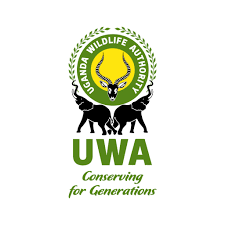Antelopes in Murchison Falls National Park
Introduction & Overview
Murchison Falls National Park, Uganda’s largest and oldest protected area, is celebrated for its thundering waterfall on the Nile, its elephants, lions, and giraffes, and its vibrant birdlife. Yet among the most fascinating animals that define the park’s ecosystem are the antelopes. These graceful and diverse species are at the heart of Murchison’s savannah and woodland life. From the common and widespread to the rare and elusive, antelopes embody the pulse of the park, serving as prey for predators, shapers of vegetation, and icons of beauty in motion. To understand Murchison Falls fully is to appreciate its antelopes, which appear at every turn of the safari track, each with a unique story.
Uganda Kob – The National Symbol
Perhaps the most iconic antelope in Murchison Falls is the Uganda kob, a species so emblematic that it appears on the country’s coat of arms. Found in large numbers across the park, particularly on the open savannah plains, the Uganda kob is a sight to behold. Males are easily distinguished by their lyre-shaped horns and often gather in lekking grounds where they display strength and dominance to attract females. These gatherings, full of energy and movement, are a highlight for travelers, offering a glimpse into the drama of wildlife courtship. Their abundance also makes them a primary prey species for lions and leopards, ensuring their vital role in the park’s food chain.
Jackson’s Hartebeest – The Long-Faced Runner
Standing taller and more angular, the Jackson’s hartebeest is another antelope frequently encountered in Murchison. Recognizable by its elongated face and sharply sloping back, this species thrives in the park’s open grasslands. Hartebeests are built for endurance rather than speed, often seen grazing in herds or keeping watch for predators from higher ground. Their presence reflects the wide ecological range of the park, from riverine valleys to grassy plains, and their cautious behavior makes them fascinating to observe.
Oribi and Other Small Antelopes
While larger species dominate the plains, Murchison Falls also shelters smaller, more elusive antelopes. The oribi, a dainty species with slender legs and a distinctive white patch under its tail, can often be spotted darting gracefully across clearings. Their nervous energy and alertness make them masters of survival in landscapes where predators lurk. The bushbuck, shy and solitary, prefers the thicker vegetation along riverbanks and woodlands, where its mottled coat blends into the shadows. Encounters with bushbucks are quieter, more intimate, offering a contrast to the spectacle of kob herds.
Waterbuck and Their Riverine World
Along the banks of the Nile and near water sources, the defassa waterbuck makes its presence known. With shaggy coats and a robust build, these antelopes are never far from water, where they can escape predators if threatened. Their characteristic white rump ring makes them easy to identify, and their association with riverine landscapes adds to the diversity of habitats in Murchison Falls. Watching a herd of waterbuck grazing near the river while elephants drink nearby and hippos grunt in the background is one of the quintessential safari moments in this park.
The Role of Antelopes in the Ecosystem
Antelopes in Murchison Falls are more than just wildlife to observe; they are key players in the ecosystem. As grazers and browsers, they shape the vegetation and open up habitats for other species. Their presence attracts predators such as lions, leopards, and hyenas, creating the drama that defines the safari experience. Bird species like oxpeckers also rely on antelopes for food, forming fascinating symbiotic relationships. For visitors, this means every antelope sighting is connected to a larger story of balance and interdependence in the wilderness.
Conservation and Protection
Like all wildlife in Uganda, antelopes benefit from the conservation measures enforced by the Uganda Wildlife Authority. Protection against poaching and habitat loss ensures that species such as the kob and hartebeest continue to thrive. Tourism also plays a critical role, as revenues from park entry fees and safari activities fund conservation programs and support surrounding communities. The survival of these antelopes is closely tied to the success of Murchison Falls as both a protected area and a premier safari destination.
Antelopes in Murchison Falls National Park add grace, movement, and ecological depth to Uganda’s most celebrated wilderness. From the proud herds of Uganda kob on the plains to the solitary bushbuck in the riverine thickets, every sighting enriches the safari experience. They are the silent guardians of the savannah, sustaining predators, maintaining habitats, and embodying the timeless beauty of African wildlife. For travelers, seeing antelopes in Murchison is not just about spotting species—it is about understanding the rhythm of life that makes this park one of Africa’s most captivating destinations.




